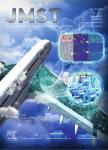Modeling of Solidification Microstructures Based on Fully Coupling of Macro-transport Phenomena with Cellular Automata
Modeling of Solidification Microstructures Based on Fully Coupling of Macro-transport Phenomena with Cellular Automata作者机构:Institute of Metal ResearchChinese Academy of SciencesShenyang 110015China
出 版 物:《Journal of Materials Science & Technology》 (材料科学技术(英文版))
年 卷 期:2000年第16卷第6期
页 面:568-572页
核心收录:
学科分类:081704[工学-应用化学] 07[理学] 0817[工学-化学工程与技术] 0806[工学-冶金工程] 070304[理学-物理化学(含∶化学物理)] 08[工学] 0805[工学-材料科学与工程(可授工学、理学学位)] 0703[理学-化学] 0802[工学-机械工程] 0801[工学-力学(可授工学、理学学位)] 0702[理学-物理学]
基 金:financially supported by the National Super-steel Project with the grant number G1998061512
主 题:Microstructure
摘 要:This paper has attempted to simulate the microstructure formation based on fully coupling of temperature field, concentration field and velocity field with micro-kinetics. The authors presented a new way, which is the combination of FDM and cellular automata (CAFD) to visualize the microstructure formation of the thin complex superalloy turbine blades cast by the vacuum investment process. The distribution, orientation and mechanism of the heterogeneous nucleation, the growth kinetics of dendrites and the columnar to equiaxed transition (CET) are considered. Capitalizing on these simulating schemes, the comprehensive influence of key process variables on the scale and uniformity of grains has been investigated quantitatively. The simulated grain size and morphology agree well with the experimental results.



